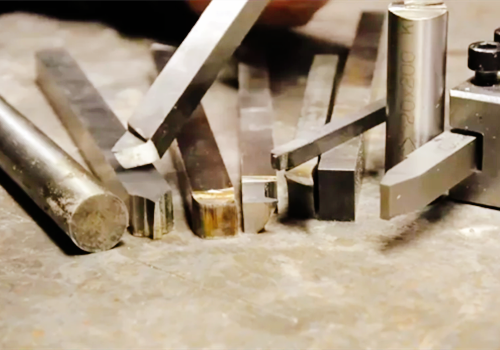Matrix steel generally refers to the steel whose chemical composition is the same as that of the matrix in the quenching structure of high sped steel(HSS). That is, adding a small amount of alloying element or changing carbon content appropriately to the matrix composition of HSS to improve the performance of the steel to meet some special requirements. Generally speaking, the matrix steel contains 0.50% ~ 0.55% carbon and 10% ~ 20% alloying elements like tungsten, molybdenum, chromium, vanadium, cobalt and others.
Matrix steel can also be considered as a low carbon version of high speed steel, sometimes directly referred to as low carbon high speed steel. This steel has high strength, high hardness compared with HSS, and it does not contain a lot of undissolved carbides, so the toughness and fatigue strength of steel is better than high speed steel. It contains less carbide relatively, the toughness and process performance of the steel is also significantly improved, often used for die tool where high impact load required.
Excess carbide in high-speed steel leads to brittleness. For cold working die materials, the amount of carbide caused by stress concentration must be reduced to improve their toughness. The matrix steel combines the strength of HSS and the toughness of ultra-high-strength steel. Based on the die steel and HSS, the United States has developed a matrix whose composition is close to that of the normal heating quenching of HSS, with residual carbide less than 5%. The toughness is similar to that of ultra-high strength steel and the strength is similar to that of HSS through heat treatment. The carbon content of the matrix steel is reduced to about 0.55%, the total alloying element is 12%~22% smelted in a vacuum furnace. The excess carbide particles in the heat treatment state are fine and evenly distributed. When the hardness is 62~64HRC, the fatigue strength is 5~10 times that of ordinary high speed steel M2, which has been used for making extrusion dies and punches with f complex shapes, with a service life extended 4~10 times.
The representative steel grades of matrix steel are Vascoma (5Cr4W3Mo2V) steel of vanadium alloy steel company of the United States, DRM1, DRM2, DRM3 steel of Datong Special Steel Corporation of Japan, YXR33 of Hitachi Metals Corporation of Japan, etc. GB material grades 6Cr4W3Mo2VNB (65NB), 5Cr4Mo3SimNVal (012AL), 7Cr7Mo2V2Si (LD), 6Cr4Mo3Ni2WV (CG-2), 6W8Cr4VTi (LM1), 6Cr5Mo3W2VSITI (LM2), 5Cr4W5Mo2Mo2V (RM2)
Matrix steel combines the advantages of gold structural steel, high-speed tool steel and bearing steel. It has a high red hardness and heat resistance, plasticity and toughness is10 ~ 15 times higher than that of high-speed tool steel, higher hardness and strength when secondary hardening tempering, can be used as the cold and hot die, cutting tool, ultra high strength fasteners, shaft, bearing, gear, pressure vessel, high-speed rotor, plane frame, turbine components, rocket engine shell.







